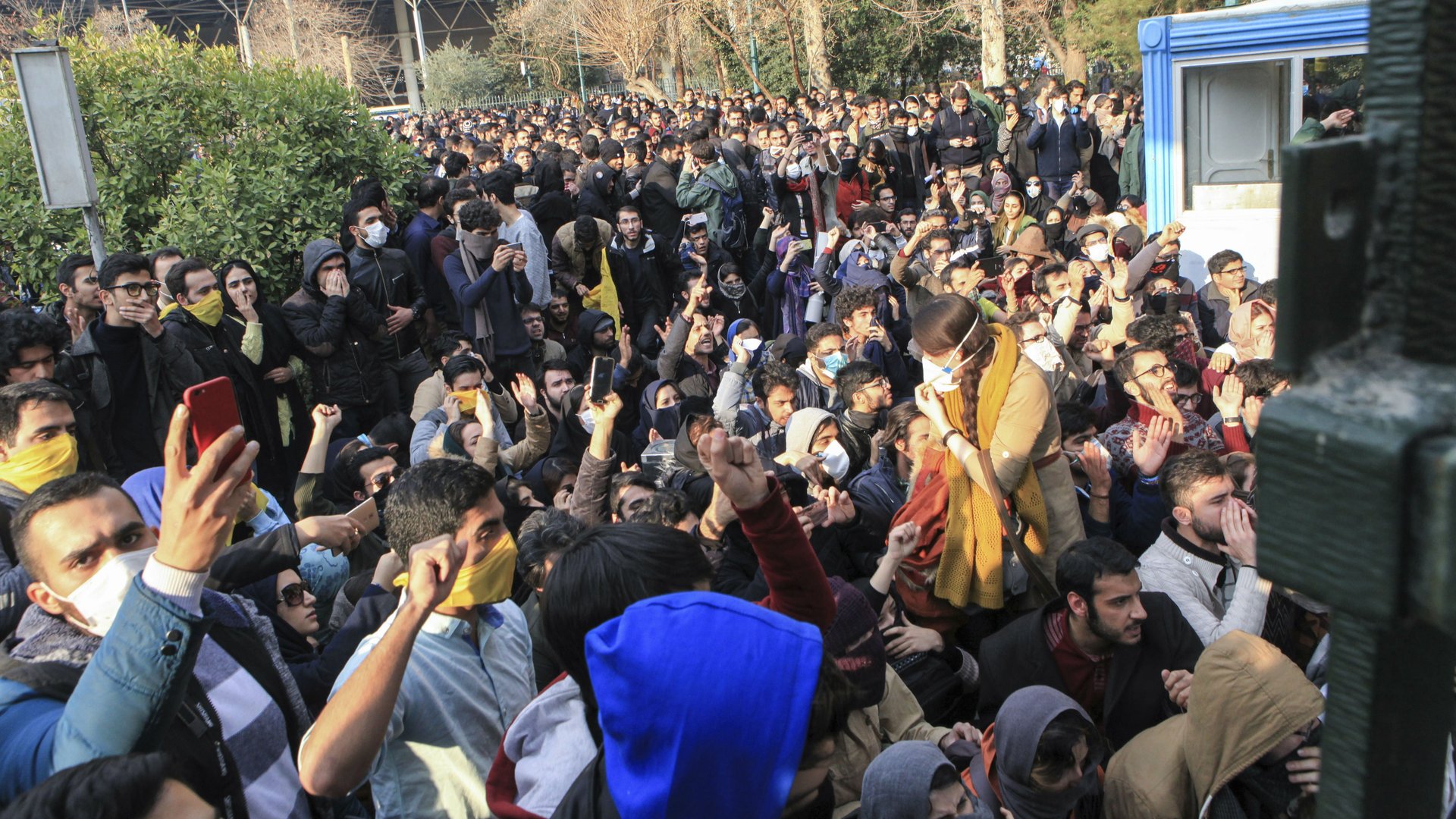Everything you need to know about the protests in Iran
On Thursday (Dec. 28), thousands of Iranian citizens began protesting government corruption and a poor economy. Although the exact number of participants is unclear, the protests are the largest in Iran in recent history.


On Thursday (Dec. 28), thousands of Iranian citizens began protesting government corruption and a poor economy. Although the exact number of participants is unclear, the protests are the largest in Iran in recent history.
Over the weekend, the demonstrations grew to include counter-protestors, some of whom were participating in pre-planned celebrations of the anniversary of the “Green Movement,” a 2009 wave of protests over presidential election results that was ultimately shut down by the government. On Saturday, planned celebrations in honor of the demise of the Green Movement were converted into pro-government rallies.
Thus far, there have been more than 50 government arrests and two protestors have died, although Iranian officials have not commented on how or why the two individuals were killed. On Sunday morning, the country temporarily blocked (paywall) Instagram and Telegram, which had been used to organize some of the anti-government protests. Meanwhile, officials have told local newspapers that protestors who damage property or conduct any other illegal activity will have to “pay the price.”
Snowballing causes
So far, protests have broken out in in Tehran, Mashhad, Isfahan, Kermanshah, Rasht, Qom, Sari, and Hamedan, and continued into a fourth day (video) on Sunday.
The protests were originally planned to speak out against president Hassan Rouhani in Mashhad, Iran’s second-largest city. But they quickly grew into a larger critique of the government. Many chanted and called for the “death of the dictator”—meaning supreme ruler Ali Khamenei, according to New York Magazine. Iran is an Islamic state where it is seen as particularly blasphemous to criticize the supreme ruler, who holds complete authority.
There are a number of factors fueling protestors’ discontent. First, it’s difficult for many Iranians to make ends meet: Unemployment is at 12.4%, and includes many recent university graduates. Many of those who do have jobs get paid sporadically, the Iran Wire reports.
Iranians remain frustrated by the effects of economic sanctions. Although sanctions placed by the United Nations Security Council and Germany were lifted last year as part of the nuclear agreement, several entities tied to Iran remain blacklisted. The US also unveiled a new set of sanctions against Iranian companies in July, after Iran launched a ballistic missile.
But the diminishing effect of sanctions has also exposed other problems in the country. “The nuclear deal is overwhelmingly supported by the Iranian public, but there was an expectation that much more economic development would come out of it,” Trita Parsi, president of the National Iranian American Council, told CNN. The fact that the economy hasn’t improved suggests to many that a corrupt government is to blame. Many feel that the government should be spending more money on its citizens than on interventions in Syria and Lebanon.
Additionally, Iranian women are fed up with living in a country where they are treated as inferior. “Women in Iran are highly educated,” said Alireza Nader, a senior international analyst and Iran researcher at the RAND Corporation in Washington. “They are involved in the workforce, arguably more so than any other country in the Middle East, and they are continually suppressed. This is part of their fight to gain their freedom and their rights.”
Social media’s role
The protests were first reported on Telegram, a secure messaging app used by about half of Iran’s population of 80 million. The Iranian government formally acknowledged that the protest activity as reported on social media was true.
Telegram CEO Pavel Durov shut down channels of the app that had been advocating for violence in cities, which is against Telegram policy. He allowed channels being used to conduct peaceful protests to remain operational, and Durov says that’s why the Iranian government temporarily blocked the app on cell phones. (It’s still accessible through computers with an internet connection).
Protesters are still posting updates on Twitter, which is also where—unsurprisingly—Donald Trump decided to weigh in.
Officials from the Iranian government decried Trump’s tweet as an attempt to interfere with their government. ”The great Iranian nation regards the opportunist and duplicitous support of the American officials for certain gatherings over the recent days in some Iranian cities as nothing but [part of] the deceit and hypocrisy of the U.S. administration,” Bahram Qasemi, Iran’s foreign minister, told the Tasnim News Agency.
In his first speech since the protests began, Rouhani on Sunday denounced Trump’s tweets, accusing the US president of forgetting that he “called Iranian people ‘terrorists’ a few months ago.” Rouhani also acknowledged that Iranians have the right to protest, but said such protests should not make people feel concerned about their safety.